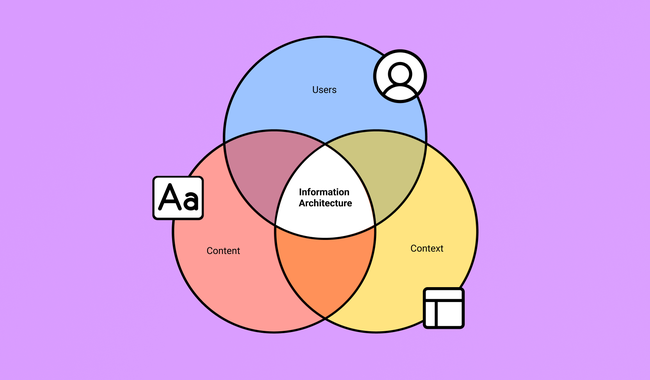What is information architecture for websites?
The key to creating an effective website? Getting the Information Architecture right
A well-designed information architecture (IA) ensures that users can easily navigate your website to find what they're looking for. The information architecture of a website is effectively its blueprint; it dictates what information goes where, how it’s organised and prioritised, and how it will be labelled and accessed.

Components of IA
Information architecture consists of multiple different elements, including:
- Organisation systems: How information is categorised and structured, such as the main navigation menu.
- Labelling systems: How information is represented and named.
- Navigation systems: How users move through the information.
- Search systems: How users search for information.
Creating an effective IA
Whether you’re embarking on an exciting new website, or doing a major overhaul of an existing one, you should consider the following steps to create an information architecture that keeps your site performing well and your users satisfied.
- User research: Research and understand your users’ needs, motivations, and behaviours. What are they trying to achieve? Your IA should make it easy for users to complete the most common user journeys. This research could involve user surveys, interviews, or usability testing.
- Content inventory and audit: Make a list of all the content on your site and evaluate what you want to keep, update, or discard.
- Structuring content: Group related content together into logical sections. You could consider using techniques like card sorting, where users categorise content pieces to get insights into how users might expect your content to be organised.
- Navigation: How users access content should be intuitive. Common methods include hierarchical (main topics with subtopics), sequential (step-by-step processes), or matrix (where users can choose their path).
- Labelling content: Use clear, jargon-free terms that resonate with your user base. You won’t always have wider context in your menu bar, so landing page and content page titles should be logical and easy to understand.
- Test: Always validate your architecture with real users. Tools like tree testing can help, where users are asked to complete common user journeys using your site's proposed main menu.
- Iterate: Based on feedback from your users, refine and evolve the architecture if needed. Looking at frequently asked questions to your help desk is likely to offer insights into what users are currently struggling with on your website.
The role of design in IA
Your website’s visual design and information architecture need to work together. Designers should consider:
- Design elements: elements like typography, colours, and spacing to indicate content importance and relationships.
- Interactive elements: Dropdowns, sliders, or accordions can help in presenting content in an organised manner without overwhelming the user.
- Feedback mechanisms: like hover effects, animations, or tooltips can offer feedback, guiding users through their journey.
- Mobile responsiveness: Ensure that the IA remains consistent and intuitive across devices, be it desktops, tablets, or mobiles. For example, hover states don’t work on mobile, so you need a different way of achieving the intended effect.
IA for large and complex websites
We frequently work with clients that have large websites serving several distinct user types with a range of user needs. Over time, these organisations can develop sprawling digital estates that become unmanageable and difficult to navigate. There might be too many top-level menu options, or duplicated content that would benefit from being reconfigured into a clear, logical, and simplified structure.
Often for larger sites it’s worth thinking in terms of ‘less is more’. Too much content can be overwhelming for users, and you can use your analytics and user needs to decide what to cull. Our experience in delivering effective websites for organisations with a large digital footprint means we’re able to avoid common pitfalls and bring clarity from complexity. If your organisation is considering how it can improve its website by updating its information architecture to surface content more effectively, get in touch with us and we’ll be happy to talk through how we can help.

How to reduce the environmental impact of your digital activities